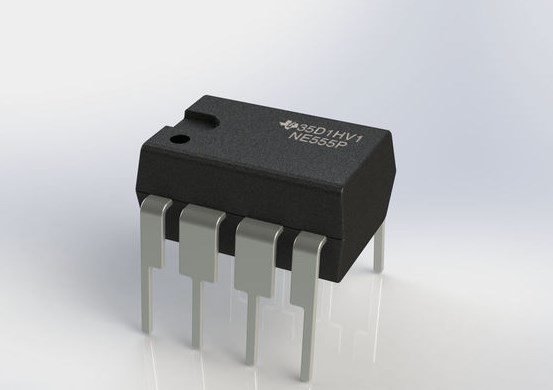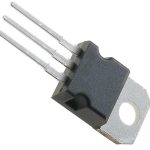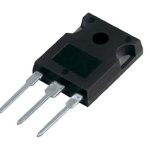The NE555 timer, also known as the 555 timer IC, is a versatile and widely used integrated circuit in the field of electronics. Since its introduction by Texas Instruments, the NE555 has become a staple component for various timing and oscillation applications. Its simplicity, availability, and cost-effectiveness have made it a favorite among both beginners and experienced electronics enthusiasts.
NE555
Introduction
The NE555 is a versatile timing IC that can be used for a wide range of applications. It consists of 23 transistors, 2 diodes, and 16 resistors on a single silicon chip. This compact design makes it easy to integrate into electronic circuits, making it a go-to choice for hobbyists and professionals alike.
Functions
The NE555 offers several useful functions, including operating as a monostable multivibrator, an astable multivibrator, or a voltage-controlled oscillator. In monostable mode, the NE555 produces a single pulse of a specified duration when triggered. In astable mode, it generates a continuous stream of square wave pulses with a specific frequency. As a voltage-controlled oscillator, it can produce frequency-modulated signals.
Pros and Cons
Like any electronic component, the NE555 has its advantages and disadvantages. Some of its notable pros include:
- Its low cost, ease of use, and availability.
- The NE555 is widely available and can be purchased from numerous suppliers worldwide.
- Additionally, it requires minimal external components, making it straightforward to implement in various projects.
However, there are a few cons to consider.
- Firstly, the NE555 has limited timing accuracy due to temperature variations and aging effects.
- Secondly, it may not be suitable for applications requiring extremely high frequencies or precise timing.
- Lastly, the NE555 is not particularly power-efficient, consuming more current than some modern alternatives.
How does NE555 work?
The NE555 consists of three main components: two comparators, a flip-flop, and an output stage. The comparators compare the voltages at different pins with a reference voltage, determining the output state of the flip-flop. The flip-flop, in turn, controls the output stage, which switches the output between high and low states.
When used as a timer or oscillator, the NE555 relies on external resistors and capacitors to determine the timing characteristics. By adjusting these external components, you can customize the timing intervals and frequency according to your requirements.
Model: NE555DR
Introduction of NE555DR
The NE555DR is a variant of the NE555 timer IC that comes in a different package style. It’s worth noting that the NE555DR is just a specific package variant of the NE555, and its functionality remains the same as other versions of the NE555.
Functions of NE555DR
- Monostable Mode: In this mode, the NE555DR operates as a “one-shot” timer. It produces a single pulse of a fixed duration when triggered, making it useful for applications such as time delay circuits, pulse width modulation, and debounce circuits.
- Astable Mode: In this mode, the NE555DR operates as an oscillator, generating a continuous train of pulses. The frequency and duty cycle of the output pulses can be adjusted using external resistors and capacitors, allowing for applications such as tone generation, clock circuits, and LED blinking.
- Voltage-Controlled Oscillator (VCO) Capability: The NE555DR can also function as a VCO by varying the control voltage applied to its control pin. This feature allows for applications such as frequency modulation, frequency synthesis, and FM signal generation.
- Output Pulse Width Control: The NE555DR allows for control over the duration or width of the output pulses in both monostable and astable modes. This flexibility makes it suitable for various timing requirements in electronic circuits.
- External Triggering: The NE555DR can be triggered externally by applying a trigger pulse to its trigger pin. This feature enables synchronization with external events or signals in timing applications.
- Drive Capability: The NE555DR has a relatively high output current capability, allowing it to directly drive small loads such as LEDs or small motors without the need for additional amplification circuitry.
Datasheet of NE555DR
Click the picture below to know more details about this datasheet!
Pcb Symbol and Footprint of NE555DR
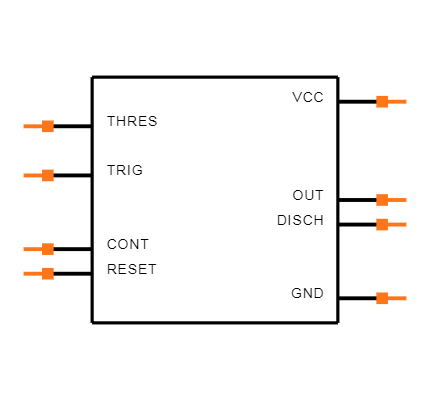
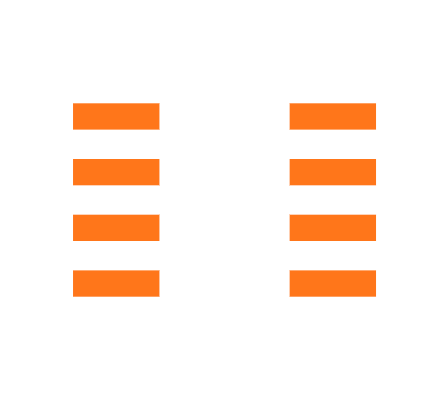
Related Comparison
What is the difference between TLC 555 and NE555?
The TLC555 is another popular timer IC manufactured by Texas Instruments. While it shares many similarities with the NE555, there are some differences to consider. The TLC555 operates at lower power consumption and has a wider operating voltage range compared to the NE555. Additionally, the TLC555 offers improved input and output characteristics, making it suitable for more demanding applications.
What is the difference between NE555 and 555 timers?
In terms of functionality, there is no difference between the NE555 and the 555 timer. The term “NE555” is simply a brand-specific name used by Texas Instruments for their version of the 555 timer. Other manufacturers may use different prefixes, but the underlying circuitry and functions remain the same.
What is the difference between NE555 and TS555?
The TS555 is a variant of the 555 timer IC manufactured by STMicroelectronics. Similar to the NE555, the TS555 offers the same functionality and features. However, there may be slight differences in terms of operating voltage range, power consumption, and other electrical characteristics. It is advisable to consult the respective datasheets for detailed specifications when choosing between the NE555 and TS555 for a specific application.
FAQs
Is NE555 a flip-flop?
No, the NE555 is not a flip-flop. It is a versatile integrated circuit that includes two comparators, a flip-flop, and an output stage. The flip-flop within the NE555 is responsible for controlling the output stage based on the input signals received from the comparators.
Is the 555 timer obsolete?
While the 555 timer has been around for several decades, it is still widely used and considered a reliable component in many electronic applications. Although newer alternatives with advanced features have emerged, the 555 timer is not obsolete. Its simplicity, availability, and low cost make it a popular choice for various projects, especially among hobbyists and educational purposes.
How accurate is the NE555 timer?
The accuracy of the NE555 timer depends on several factors, including temperature variations and aging effects. In general, the NE555 timer’s timing accuracy is moderate and may not be suitable for applications requiring high precision. However, by using external components like resistors and capacitors with tighter tolerances, you can improve the overall accuracy to some extent.
What replaced the 555 timer?
Several alternatives have emerged over the years that can replace or complement the functionality of the 555 timer. Some popular replacements include the TLC555 (manufactured by Texas Instruments) and the TS555 (manufactured by STMicroelectronics). These timers offer improved features, such as lower power consumption, wider operating voltage ranges, and enhanced electrical characteristics.
What is the frequency of the NE555 pulse module?
The frequency of the NE555 pulse module depends on the values of the external resistors and capacitors connected to it. By selecting appropriate resistor and capacitor values, you can determine the frequency of the pulses generated by the NE555 timer. The formula commonly used to calculate the frequency is f = 1.44 / ((R1 + 2 * R2) * C), where R1 and R2 are the resistances and C is the capacitance.

Conclusion
In conclusion, the NE555 timer is an essential building block in the world of electronics. Its wide range of functions, ease of use, and affordability have contributed to its enduring popularity. Whether you are a hobbyist tinkering with electronic projects or a professional engineer designing complex circuits, understanding the principles and capabilities of the NE555 timer opens up a multitude of possibilities.

